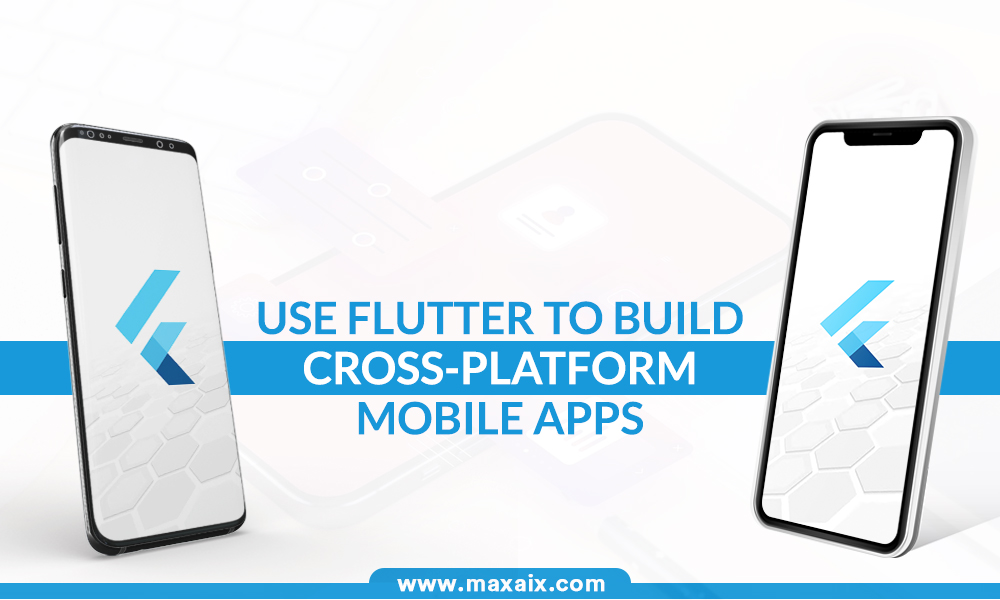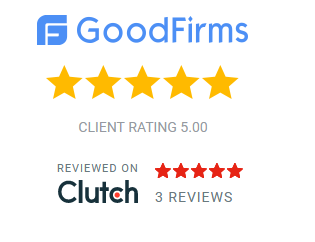Cross-Platform App Development with Flutter

Businesses and developers are always searching for effective solutions to serve a diversified audience across different platforms in the fast-paced world of technology. In this sense, flutter—a powerful framework for building cross-platform mobile applications—has become more well-liked. This comprehensive tutorial will go over how to create flexible and effective cross-platform mobile apps using Flutter.
Flutter: What is it?
An open-source UI software development kit called Flutter was developed by Google. With only one codebase, developers can create stunning native interfaces for web, iOS, and Android applications. Since its 2017 release, Flutter has grown in popularity among developers due to its exceptional performance, flexible and expressive user interface, and speedy development speed.
What is Flutter in app development?
Within the app development space, Flutter serves as a reliable framework for building cross-platform apps. Developers can write code once and easily distribute it across numerous platforms with Flutter, in contrast to traditional approaches that need distinct codebases for each platform. This approach guarantees a consistent user experience across devices while drastically reducing development time and expenses.
Which language is used in Flutter?
The main programming language used by Flutter is Dart, a modern language created by Google. Dart is well acknowledged for its ease of use, effectiveness, and adaptability, which renders it an ideal option for developing mobile and online apps. Dart’s well-known syntax and extensive library make development easier and enable programmers to design scalable, highly effective apps.
The Working Mechanism of Flutter
The “widget” system, which Flutter uses, is a distinctive architecture in which everything is a widget. The core building blocks of Flutter apps are called widgets, which stand in for UI components like text fields, buttons, and layouts. By assembling and stacking widgets, this declarative approach enables developers to create intricate user interfaces (UIs) that are both highly flexible and responsive.
Benefits of Cross-Platform App Development with Flutter
- Single Codebase: Flutter allows one-time code creation for both iOS and Android, supporting multi-platform release.
- Hot Reload: This feature accelerates development by instantly reflecting code changes in the app.
- Native Performance: Compiling to native code, Flutter delivers high performance and fluid animations.
- Rich UI: With customizable widgets, developers can craft visually impressive user interfaces.
- Community Support: A robust community offers extensive resources like tutorials, packages, and docs for Flutter development.
Features of Flutter That Make the Development Process More Efficient
- Widget Library: Flutter offers a vast collection of ready-to-use widgets for common UI elements, reducing the need for custom coding.
- Platform APIs: Developers can tap into native device features like cameras and geolocation through Flutter’s platform-specific APIs.
- Material Design: Flutter includes widgets that comply with Material Design for Android and iOS design standards, ensuring a native user experience.
- State Management: Flutter simplifies state management with tools like
setState,Provider, andBlocfor efficient app state and data handling.
Flutter’s Efficiency in Relation to Other App Frameworks
Performance: Compared to many other cross-platform frameworks that rely on web views or interpreters, Flutter’s built code delivers native performance.
UI Consistency: Flutter guarantees a consistent user interface (UI) across platforms, minimizing design inconsistencies, in contrast to frameworks that make use of native components.
Developer Productivity: Flutter’s single codebase architecture and hot reload functionality encourage rapid experimentation and iteration, hence increasing developer productivity.
Community and Support: Google and a burgeoning developer community provide Flutter with solid support and a wealth of tools.
Steps to Build a Cross-Platform App with Flutter
Using Flutter, creating a cross-platform application requires the following steps:
- Install the Flutter SDK and set up development tools such as Android Studio or Visual Studio Code to create the Flutter environment.
- Start a New Project: To start a new Flutter project, use the IDE or CLI plugins.
- Write Code: To define UI components, logic, and functionality, draft Dart code.
- Test and Debug: Use the debugging tools provided by Flutter to test the application and address any problems.
- Deploy: Using CI/CD pipelines or Flutter’s build instructions, launch the application on web, iOS, and Android platforms.
Why Develop Cross-Platform Apps with Flutter?
When developing cross-platform apps, there are many benefits to using Flutter:
- Faster Time to Market: Flutter allows companies to develop and deploy apps quickly, providing a competitive edge and a faster time to market.
- Cost-Effectiveness: Flutter eliminates the need for separate development teams and codebases, dramatically reducing development costs.
- High Speed: The built code of Flutter ensures native performance, offering higher app speed and a seamless user experience.
- Scalability: Flutter’s modular and adaptable architecture simplifies the scaling and maintenance of growing applications.
- Future-Proof: Google’s ongoing commitment and support positions Flutter for long-term success and innovation in mobile app development.
Cost of Developing a Flutter Cross-Platform App
The cost of developing a cross-platform Flutter app varies depending on variables, including the features, complexity of the project, location of the development team, and design needs. The price might vary from a few thousand to hundreds of thousands of dollars on average. However, companies may save development costs and increase return on investment by utilizing Flutter’s efficiency and scalability.
Flutter’s Future
With Google continuing to dedicate resources to its development and Flutter becoming more and more popular among developers and companies worldwide, the future of the app seems bright. As Flutter develops, we should expect enhancements in terms of performance, tooling, and ecosystem support, solidifying its standing as the top framework for creating cross-platform apps.
Hire Flutter app developers at Maxaix
Our team of talented Flutter app developers at Maxaix provides excellent cross-platform mobile solutions. Whether you want to convert an existing app to Flutter or start fresh when creating a new app, our professionals can help you reach your goals quickly and affordably. Please contact us to discuss your project requirements and let us assist you in using Flutter to bring your idea to life.
Final Thoughts
Flutter has revolutionized cross-platform mobile app development with its performance, speed, and flexibility. It allows businesses to build diverse, high-quality apps compatible with multiple platforms. As it evolves, Flutter remains a preferred choice for developers and companies seeking efficient, advanced app development solutions.
Frequently Asked Questions (FAQ)
What advantages does cross-platform programming using Flutter offer?
A shorter time frame for development
A single codebase shared by several platforms
At par with native performance and an immersive experience
A large selection of movable widgets
Is it possible to use Flutter for web development?
Flutter facilitates online development, allowing programmers to create responsive and interactive web apps with the same codebase they use for mobile apps.
Is Flutter suitable for extensive use cases?
Yes, Flutter is a good tool for building complex and large-scale apps because of its modular structure and performance improvements.
How does Flutter compare to React Native and other cross-platform frameworks?
Although cross-platform development is possible with both Flutter and React Native, Flutter stands out because of its speed, hot reload capability, and consistent user interface across platforms.
Does Flutter have any restrictions?
The main drawback of Flutter is that its ecosystem is smaller than that of more well-established frameworks. Still, the Flutter community is growing quickly, and there are more and more packages and plugins out there.
Can Flutter apps use native code that already exists?
It is possible to include pre-existing native code written in Objective-C/Swift (iOS) or Java/Kotlin (Android) into Flutter apps using platform channels, thanks to Flutter.
Is Flutter appropriate for creating business apps?
Flutter is undoubtedly a good fit for developing corporate apps as it has advantages like scalability, affordability, and a faster time to market.
How often is an update released by Flutter?
Every three months or so, Flutter releases new features and upgrades by schedule.
Is Flutter a good option for new businesses?
Flutter is undoubtedly a great option for businesses looking to create mobile apps quickly and affordably since it allows them to quickly iterate and adjust to changing market needs.


